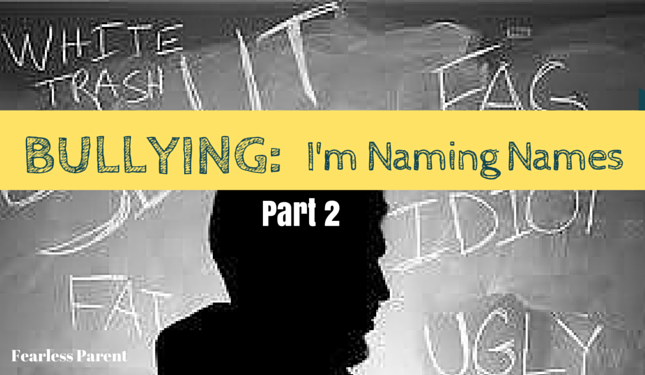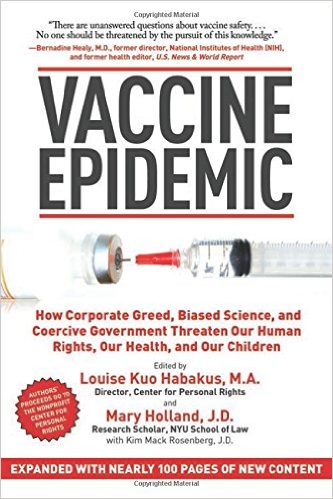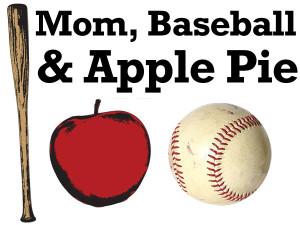My son was bullied at Oak Hill Academy
After reading about Rebecca Sedwick, a 12 year-old who killed herself after she was tormented by bullying, I was moved to tell two stories. Yesterday, I told you mine. Fast forward one generation. Today, I will tell you my son’s.
Oak Hill Academy in Lincroft, New Jersey is a private elementary school founded in 1970. My children were there for a total of ten academic years. The bullying happened during the 2010-2011 school year when my son was in 4th grade. We spent seven months working with the teacher, who we came to see as a part of the problem, and then with the administration.
The school was unable to stop the bullying. We withdrew our son in April and his brother in June.
We subsequently enrolled our boys in The New School of Monmouth County, an alternative school that focuses on social-emotional intelligence, collaborative learning, and conflict resolution. They are thriving.
We have a happy ending. It’s water under the bridge. So why do I mention the name of the school now?
I’m doing it for Rebecca, for my son, for me, and for the millions of children who are bullied.
Nothing healthy grows in the dark
When parents know what’s happening with other children, they can ask tough questions and demand change.
After we left, I learned that there have been numerous families who quietly left Oak Hill because of bullying. A couple of moms later told me their children suffered lasting psychological trauma and needed therapy. I hear that the bullying there continues today.
Parents have a reasonable expectation that schools have the expertise to handle bullying and train their staff accordingly.
Oak Hill opened its doors over 40 years ago. And yet, their efforts basically consisted of different adults telling students in different settings (one on one, in small groups, and to the entire class) to ‘stop it’ and ‘be nice.’
It didn’t work and the bullying escalated.
The teacher turned a blind eye, then worse
When my son defended himself against one of the bullies in class, she gave him his very first demerit.
She said it was “too difficult” for him to get a piece of the gluten-free cake he had brought in, in the shape of one of the New Jersey counties, because it was mixed in with the other counties.
She made fun of his canteen, calling it the “killer water bottle,” to the delight of his tormenters.
The school suggested that my son change his homeroom. I inquired why the bullies were not asked to move instead and was told: “Oh no, we can’t do that.”
The parents wouldn’t engage
I reached out to the bullies’ parents directly, leading with an open-ended: “Our children are having some difficulties with each other in school. Could we talk?”
Two parents didn’t return my phone calls and a third said it was news to her that our children weren’t getting along. When I asked the school to request a meeting with the parents, the response was: “We can’t parent the parents.”
Based on input from friends, I surmised that these children may have been struggling for reasons that had nothing to do with my son — one with the dissolution of his parents’ marriage and two with poor grades. The last seemed to be emulating her mother, legendary on campus for her loud, caustic personality.
The last straw
One of the bullies tripped my son and kept his foot on my son’s neck. The aide who was present had been made aware of the bullying and was supposed to help protect my son. Rather than support my child, the aide urged my son to “laugh it off.” And then the school had the nerve to call me to express their concern that my son had been disrespectful to the aide.
We were done.
Patrice Murray, the Director of Personnel, asked us to reconsider. She said that she was going to teach the boy to apologize.
I know she meant well but it was seven months too late. As far as I was concerned, Oak Hill Academy had lost the right to educate my son.
We were not a difficult family who failed to fit in. Our boys excelled academically, were adored by all their teachers (except this one), and made good friends (who remain so today). I was a Class Mom and co-led major fundraising events. For Oak Hill’s Middle States Association (MSA) evaluation in 2007, the headmaster and founder, Joseph Pacelli, selected both me and my son to speak with the MSA Visiting Team.
A broken promise
During a private meeting after our departure, Pacelli admitted that the school should have done better by our son. He sent him a kind note and then committed to implementing a rigorous, state of the art anti-bullying policy at the start of the 2011-2012 school year. He said that he would be consulting with a nationally known bullying expert, using my detailed letter to inform the effort, and would keep me posted. It was too late for us, but I was satisfied by his response.
I never heard from Pacelli again. When it became clear that no such bullying program was being implemented, I was not happy.
We had been through hell. A boy put his foot on my son’s neck. Pacelli thought highly enough of me to request that I vouch for the school during their all-important accreditation review. And he wasn’t going to follow through with the anti-bullying program he promised us?
This was not OK.
On behalf of my son, we wanted a tangible, meaningful acknowledgement of Oak Hill’s abject failure. Their inability to resolve the bullying harmed my son. If the school wasn’t going to take steps to protect other children, then I felt they should make amends in another way. I asked for a monetary settlement.
The school referred the matter to its insurer. The local paper declined to cover the story because it didn’t want to offend an advertiser. And after some soul searching, I made the decision to move towards our future and not dwell in the past.
Until Rebecca Sedwick’s story pierced my heart.
Like me, my son never looked back. He’s happy. But I’m quite certain that he, too, will never forget the names of his bullies or the school that wasn’t able to help him feel safe.
What the experts say
Bullying is deeply upsetting and it can be difficult for parents to know what to do. I found these two lists helpful.
WHAT SCHOOLS CAN DO
Experts agree that schools have serious responsibilities when it comes to bullying. They should:
1. Take bullying seriously, investigate the situation, and let the parents know what steps the school is taking.
2. Have written policies and rules, and enforce them.
3. Speak to the bully and his parents, and inform them of the consequences if the bullying does not stop.
4. Increase adult supervision in areas where the bullying is likely to take place.
5. Inform personnel about those being victimized so they can monitor and provide support.
6. Communicate often with the victim’s parents about how the situation is being handled.
WHAT PARENTS CAN DO
It is devastating for parents when a child is bullied. It can be difficult to know what to do. There is a temptation to wait, in the hopes that the whole thing will blow over. Don’t. It is important to act early and decisively. This Psychology Today article advises:
1. Start talking. A lot. Reach out to as many people—teachers, administrators, parents, neighbors, community leaders, online blogging communities, and even the media, if necessary—to make sure the bullying stops.
2. Document everything. Record as much detail as possible: incidents, dates, people involved, conversations, decisions, and plans of action, to keep people organized, informed, and goal-oriented.
3. Keep at it. The determination and strength that parents show make a big difference to the victim.
I’ve heard some who feel that children should gut it out and learn to fight back. I don’t agree. If children don’t feel safe, they can’t learn. And the stakes are too high. By asking them to stay, we send the message that it is acceptable to remain in an abusive environment that is failing to keep them safe.
***
Bullying is especially frightening because it is unpredictable. I wanted to give my son some measure of control. So I let him decide. I told him he could: 1) persevere and finish out the year, 2) change homerooms and see how it goes, or 3) be homeschooled and find a new school. He chose #3.
With that decision, my inner 7 year-old high-fived my 9 year-old son. And a tremendous healing took place, for us both.
Bullying: I’m Naming Names — Part 1
 Louise Kuo Habakus is Executive Director of Fearless Parent. She is lead host and producer of Fearless Parent Radio. When it comes to bullying, Louise hopes you will teach your children about the critical role of the bystander and urge them to speak out. The risk of generating an eye-roll is worth the possibility that you might help save a life.
Louise Kuo Habakus is Executive Director of Fearless Parent. She is lead host and producer of Fearless Parent Radio. When it comes to bullying, Louise hopes you will teach your children about the critical role of the bystander and urge them to speak out. The risk of generating an eye-roll is worth the possibility that you might help save a life.
Resources
There are thousands of resources about bullying, including websites, books, articles, and blogs. Here are just a few, and I invite you to add your favorites:













Thank you for naming names and providing the example for others to do the same. I am so relieved and happy for you and your son that you’ve found a safe, supportive and appropriate educational setting. You nailed it with “nothing healthy grows in the dark”. Well done!!
It was a relief to us, too. And really wonderful not to have that feeling of dread in mid-August anymore… everyone is now excited to go back to school. You recently wrote a wonderful post for us about unschooling. Was the potential for bullying also a factor in your decision?
I had to read your article twice..yes, twice, because the first time I read it I was reading it as a mom. My heart broke in a million pieces for your son. The mother in me felt your helplessness and rage over everyone..teachers, administration, and other parents…who would passively allow your child to be continually victimized by everyone. I applaud your patience and efforts in your willingness to allow them to address the problem. I don’t think I would have been as cooperative. It is beyond sad to realize that the rights of a victim, even a small child, are secondary to those of irresponsible adults. I call them irresponsible adults because that’s what they are. They are sending young people a very warped and distorted message that there are no consequences for unacceptable actions, and sending these young adults armed with that notion out into the world. These parents open their wallets for a private education and put their parenting skills away. How is it that they don’t realize their darlings will not learn everything they need to know in school? Why are schools so slow to address serious issues regarding their students’ behavior? Is everyone fearful of doing the right thing? Everyone is choosing to be much too passive while children are progressively getting angrier and more violent. And they become angry, violent adults with no conscience. School policies regarding bullying and responsibility must be changed. Oh, right, zero tolerance is already in place. Looks great on paper..needs backbone behind it to enforce it. Administration with enough backbone and concern for protecting students that takes precedence over their concern for protecting their jobs. Parents who are more concerned with giving their children with values and morals and putting in the elbow grease it takes to make this happen.
I’m so sad and sorry your son and your family had to endure this. Clearly you have done a remarkable job of shaping a strong, intelligent child. Thank God he has involved, supportive, intelligent parents to have guided him through this horrific situation. What happens to the children who don’t? What happens to the children who suffer silently while the adults around them subscribe to the “let’s wait and see” philosophy? Unfortunately, we live in a society that for the most part is so busy going about our lives that the most important part of our lives…our children..are lost in the translation. The saddest part of all of this is if parents were truly “present” for their children, bullying in schools would not be at this horrific and monumental level. School administrators have to shed their cowardice, step up to the plate and flex their integrity muscles. Until that happens, all the laws are just words on paper.
Many schools are failing our children. I don’t think they’re evil. But I do think they’re pragmatic. There are always too many things to do. If we don’t clearly communicate to them that they have A Very Urgent Matter to address, however… they won’t treat it that way. We have to be respectful, though. And at the end of the day, we have the last word. We can leave.
My heart breaks into a million pieces, too.
Dear Louise, I am sorry your son and your family had to go through this experience. I hope he is well settled in his new school. I agree with everything you have said. My son was also bullied. We asked the administration to have the teachers observe the students and to intervene and discipline as per their observation. We also insisted that there be an adult in the locker room, as he was body slammed by an angry student when he went to retrieve something from his locker, whenever children were in there. We were concerned about Matthew’s safety as the boy had a history of assaults and had been in a detention center. We also made sure Matthew buddied up with a friend when he was walking home or off school grounds. The next day, after the incident, the offender pushed Matthew at lunch. The vp had him down in the office, gave him detention and a o tolerance on any additional body contact with him. They started him in counseling and brought in the parents. Matthew felt badly for him and was friendly towards him, as he felt badly about his family circumstances. They are comfortable with each other and the bulling stopped. We empowered Matthew by letting him know he was being supported in school and at home. We were fortunate that we had a responsive, supportive administration to observe, intercede and offer counseling to the parties who were involved. Our school places a o tolerance on bullying and educates the teachers and students. They have a drop box for autonomous bullying complaints and strong consequences for the offender. We have social workers who come into the district to educate the kids on anger management, bullying and appreciating each others differences. Many schools are incorporating buddy systems, so that those children who are at highest risk for bullying have an older student to buddy. As a counselor, I have recommended self defense classes for children. It empowers and protects them. Lastly, the staff needs to be educated on the harms associated with bullying, how to observe, prevent, intervene and correct these situations. Thanks for sharing a very personal and hurtful experience to benefit your readers. Stay well. Jessi
Thank you for sharing Matthew’s story. Good for his school! Strong leadership and a clearly defined position on bullying must start at the top.
Kids watch and see. They know what’s important and what they can get away with. The bully’s parents may not care about harm to your child, but most will care if their own child is kicked out of school.
Thank you for speaking up on such an important topic. Way too often as you found, the teacher is a huge part of the problem. Glad your son is doing well.
I’m sorry to hear he was being bullied. I was bullied in 5th grade, it was horrible, but taught me that it doesn’t matter what social group you’re in, if you’re a good person, you’re a good person. I ended up being Homecoming Queen senior year & credit that awful year. With that being said, today is a very different & scary time to be bullied. I’m glad he left & is happier now!
Yay, Lisa! I had a very similar experience, some of which I shared in my first post on bullying. After leaving Bedford and moving to Japan, I made the cheerleading squad, was a Homecoming princess, and dated the quarterback of the football team. I was very lucky to have had the chance for a fresh start in a supportive environment.
Heart wrenching….but glad they are in a good school now. You are an awesome mom!!!
That is not good to happen to these kids
This is one of the reasons I chose to homeschool. No question my sweet boy would be bully fodder. We have enough obstacles in life.
I was raised on Staten Island and went only to a MAAPS league private school there. At this school, any child who engaged in behavior which was even remotely like bullying was immediately kicked out of this school. One of the rare privileges of private schools, I know, but still I am thankful that I went to school there.
I recall that in the seventh grade, my class had to take what was called a Human Values class. At the beginning of that year, the teacher came into the classroom one morning and wrote onto the blackboard, “Man’s inhumanity to man.” He then forced us to write an essay on this topic during the class. In subsequent classes, we had to let our hair down and come clean as to why any of us ever would seek to hurt someone else in the class. This teacher totally made his point. I recall NO bullying in school when I was growing up. Or, when some event akin to bullying did happen, the bully, publicly reprimanded by the school’s administration, either never engaged in this behavior agqain or else was “asked to leave” the school for good if s/he did. Where has this common sense about human values gone in education today?
Music to my ears, Margaret. That’s one of the reasons that many parents choose a private school in the first place. We hope that smaller class sizes and favorable teacher/student ratios will allow educators to pay more attention to all the things that matter. There’s a big role for common sense. There are ways to communicate that certain behaviors are simply not tolerated.
Saw Louise in Silent Epidemic. She was wonderful;)
Thank you, Penny! Please encourage people to watch Gary Null’s powerful new movie!
So sorry he had to go through that!! God bless him for being a strong person to stand up and choose to leave the situation. Also wonderful that he opened up to parents knowing you guys are his backbone and can confide in you !! All the best!!! xo
Oh, Carol. I shudder to think what would’ve happened had he not found a way to tell me so I would pay attention. This was happening during the time that we were in full swing with promotion efforts for our book. It would’ve been so tempting to “wait and see.” I’ve seen the many ways you are your son’s backbone and safe place. xo
Ugh
I know, right? Ugh. It was awful. And I felt as if we were in some bizarre Twilight Zone. Things can be going fine, people are lovely, and then suddenly… everything falls apart, and those same people start behaving so strangely.
So sorry.. It’s hard not to just smack the other parent. Be strong and follow your intuition. Years ago my mother threatened the kid… And could get away with it. Lol
Gotta love those old fashioned warrior moms
“Be strong and follow your intuition.” I love that. My mom got rip roaring pissed off when I was being bullied, too. And at some point, there’s a place for that. But at first sign of this kind of behavior, there’s definitely a respectful and direct way to speak to kids so they know there’s no messing around.
Bullying has reached epidemic proportions and as long as we choose to ignore the heart of the matter it will continue to escalate. Glad you got out! There is indeed great healing in that.
Thank you, Virginia. Experts say that lack of meaningful action in response to bullying almost always causes it to escalate. That makes sense to me. It sends the message that they can get away with it.
Louise, I am sorry that happened, we had the same problem there- that’s why we left. and one of the reasons we moved out of NJ.
Oh no, Diane. It doesn’t feel good to know that other Oak Hill families were having the same problem, too, does it? I wish we had spoken about it more when we were there together. I hope you are happy in your new home and school.
great article, Louise. Thank you for sharing it to everyone. I’m sure it was not an easy task.
I’m taking the liberty of sharing this VERY powerful article. Seems every other day there is another bullying nightmare on the news. Louise Kuo Habakus is a FB friend of mine. Please read her story. We see the stuff that makes it to the news; she is one of us..please read. And talk to your children… a lot.
Kudos to her for protecting her son and I give her a lot of credit for naming the school, teacher and administrator. They have to know you cannot turn a blind eye to a child who needs support and help.
..and from a different perspective, they should care enough about the OFFENDING child to do something about him/her, too.
Good job Louise – Oak Hill needs to look at the state bullying laws – I’ve been to a couple HIB meeting in Middletown district and I am confident they are following the law. The state has a great web site – Private schools need to follow suit – there is no excuse – I did learn the difference between conflict and bullying – In your case it was clear – Harassment Intimidation and Bullying – all three and what is worse – everyone was involved. Good for you pulling your boys out!
http://www.state.nj.us/education/students/safety/behavior/hib/
Middletown moms correct me if I’m wrong.
Hi, Christina! I’m glad to hear that. My understanding is that NJ’s anti-bullying laws apply only to public schools, NOT private schools. It’s ironic to me because this was one of the important reasons why I chose a private school in the first place! I felt that a private school would be responsive and desire a reputation for decisive action regarding any kind of bullying.
Well done Mommy Louise!! You are your children’s best advocate!
Oh boy, Barbara. Thank you. There’s a lot of second guessing and hand wringing when you’re going through it. It really helps to talk about it with others.
Name Names. Period. Don’t let it keep happening.
Yes, Trudy! It has to stop! Alison and I were saying how we step in wherever we see it happening, and how unusual that is. Are we all so afraid that we are ending up creating something to be afraid of?
Thanks for posting. Julia and I talk a lot about bullies and bullying and she rehearses what she will say if she is bullied or sees someone being bullied. Another thing parents can do is to teach empathy (how would you feel if it were you?), value kindness in our children (rather than competitiveness all the time), value differences (how cool is that that you know someone who ____ – I bet you can learn a lot from him or her!) and value and encourage standing up for other people.”
Love it, Ashley Brown O’Brien, right on!
Thank you, Kim and Ashley! It is terrific to teach children what they can do. Watching your school unable or unwilling to do something about the bullying right before their eyes is damaging to everyone. And we wonder why so many have such little faith in our institutions.
My oldest had some run ins with some mean girls in middle school and the school was unresponsive. It wasn’t bullying and didn’t keep her from wanting to go to school, but it was unpleasant stuff. Kids will be kids was the school’s message. It was very important to find a place of acceptance during that time (which turned out to be a great after-school theater program). I think that carried her through. But she shouldn’t have had to deal with that.
We’re all “against bullying” and yet it continues. It seems that every day we hear stories of teenagers who just couldn’t take it anymore. How do we stop it? Louise Kuo Habakus tells us stories of bullying, what was done, what wasn’t done, what should have been done, and what should BE done going forward.
I agree, Zoey. As adults, I think we forget that their social experience at school is basically everything to our children… it’s all encompassing and all important. When such vitriolic hatred is directed at a child, day after day, and it doesn’t stop, and people in a position to do something don’t stop it, it is truly unbearable. Even just writing these words makes me wince.
Maybe shaming people? I hate to say it but maybe shaming them and giving them a taste of their own medicine will do it? Schools, bus drivers, other parents, other students. They won’t like it when the attention is focused on them. We CAN stop this.
Unfortunately a lot of bullies are proud of their deeds. Instead it is usually the bullied that feel the shame. Having the bullies deeds announced would be shameful for the victim. I know, I’ve been there. 🙁
Thank you for naming names and for bravely writing about this experience. It’s so discouraging that bullying is so common and that young people are so devastated by it that they actually take their own lives. I’m relieved your story has a happy ending.
Louise, I am very saddened to read your story and too many others that result in tragedy. As a parent of a special needs child, we too have experienced bullying, not by other students, but from other parents and educators, teachers, staff…and like too many other cases, nothing was done. NOTHING. The schools turned a blind eye, the district shrugged the incidents off and no one was held accountable. It’s a cold day in hell for those on the receiving end of such horrendous treatment – I questioned for so long where is the decency, compassion and simple humanity amongst us all that those who even witness, stand by and doing NOTHING. We were “lucky”, Florentina moved forward through her art and we created a film to tell the story in part, to bring down walls of discrimination, of bullying….taking my daughter’s lead in how she was able to move forward and be seen and respected through her art, this is what I had to do. Sending Oneness to all, Andrea http://www.FlippingTheSwitch.org
Special needs children are particularly vulnerable. Please share more about your film and story with us, when the time is right.
‘Truly I tell you, whatever you did not do for one of the least of these, you did not do for me.’ – Matthew 25:45
“I was raised on Staten Island and went only to a MAAPS league private school there. At this school, any child who engaged in behavior which was even remotely like bullying was immediately kicked out of this school. One of the rare privileges of private schools, I know, but still I am thankful that I went to school there.
I recall that in the seventh grade, my class had to take what was called a Human Values class. At the beginning of that year, the teacher came into the classroom one morning and wrote onto the blackboard, “Man’s inhumanity to man.” He then forced us to write an essay on this topic during the class. In subsequent classes, we had to let our hair down and come clean as to why any of us ever would seek to hurt someone else in the class. This teacher totally made his point. I recall NO bullying in school when I was growing up. Or, when some event akin to bullying did happen, the bully, publicly reprimanded by the school’s administration, either never engaged in this behavior agqain or else was “asked to leave” the school for good if s/he did. Where has this common sense about human values gone in education today?”
I completely agree with the above paragraph. I was speaking with my husband about Louise’s first article to come out re: her son’s bullying and told him that if I were the Superintendent of any district, I would implement a truly zero-tolerance policy, i.e., which would become effective immediately upon ANY physical/verbal assault issue.having ensued. Period. NO tolerance. My husband remarked that perhaps certain districts are ‘afraid’ of backlash by the offenders’ parents, to which I replied that if they can set aside over a million dollars in just little over a year to fight parents during the IEP process (which they do here in our district), then they can darn straight set aside enough funding to ensure the no bullying policies are effectively instituted.
I truly wish more schools had the backbone as the above has. Man’s inhumanity to man seems to be the creed of today’s time, sadly. Children all too often need to LEARN empathy toward others, something sadly missing in today’s society.
100%!! There’s often no change. Or things happen “behind the scenes.” People quietly leave, with no explanation. It sends such a bad message to our children.
I’d love to see your school, Madam Superintendent! But we don’t have to be in charge to create change. Parents have more power than we realize. And if they won’t do it for the right reasons, schools should tread carefully. Parents can demand new leadership. And even on the down low, word of mouth can kill a private school.
Putting a foot on another’ s neck and holding them down is assault. I might have called the police. I am so glad that you are naming names.
I know, Karen. I was hoping the school would do the right thing. Although parents request that a different homeroom teacher, she is still there. And from my son’s grade (about 3 dozen kids at that time), I’d guess about 1/3 are no longer enrolled in the school.
I am soooo sorry to hear that I am glad you stood your ground and the boys are soooo much happier
Hi, Laura! Me, too, thank you!! And I hope your gang is happy and doing well. There has been a lot of turnover since our kids were there together.
Louise, many times while reading this, I gasped outloud. Thank God your son has you as his mom to guide him, give him choices and protect him. BTW, shame on the school for not even implementing what they promised. ARGH!
Catherine, you were at ASIJ a few — or maybe a little more than a few 🙂 — years after I was there. Do you remember any bullying taking place? I don’t. Am I wearing rose colored glasses? Mr. Dirkse said we had some. I’m wondering if it happened when IBM and other companies started sending large numbers of people to Tokyo.
My heart goes out to your son, and your family. No child should have to endure a teacher contributing to bullying (or any bullies at all) and it’s beyond comprehension how a foot on a neck isn’t taken seriously. But, I can say I do get it — our son has been bullied in ways as well, not with a foot on the neck but with teachers who won’t comply with an IEP or who refuse to help him. Bullies beget bullies; other kids see this and bully more, and we’re told to ignore. More anti-bullying education needs to happen, and dare I say it, NOT just for a certain group of people. It’s become to where we have campaigns and days of awareness to protect bullying towards subsets of the population, but kids with disabilities are left hanging…it’s so wrong and more needs to be done about it. Hats off to you for your blog piece!
Yes! The numbers of special needs children, including the 2% of children with autism and the nearly 20% of all children who have learning disabilities, has skyrocketed. We better figure out a way to teach everyone a lot more compassion and patience, because these kids are rapidly aging out of schools and into our communities. So much more needs to be done. Thank you, Donna.
We need to have the schools administrators who are too weak or do not simply care about students being bullied watch the video footage of the what can happen. They need to take a stand or else somewhere along the way a parent is going to file a lawsuit if something happens to their child.
Honestly? Weak or uncaring administrators need to go. We desperately need strong and compassionate leaders. From all I hear out there, they’re in short supply.
I hope your son is doing well and continues to have confidence in himself. The school, teacher and headmaster should all be reprimanded – question is by whom? It’s why bullying continues – no consequences for anyone. He is truly lucky to have such a great mom. Hug him for me. Glad he spoke up early.
Parents need to know if this is a pervasive problem in their child’s school. If yes, they can organize to demand change or they can leave. I would think the Middle States accreditation folks should want to know, too. We’re glad we left. All is good now, Meglet. I hope for you, too!!! Hugs.
In an age when the term “bullying” has been so widely used, we should all consider using a less specific term and “tell it like it is.” Verbal abuse, harassment, violations of state laws, and on and on… In a dumbed down society of people and administrators who think they are immune to the rules and rights of society and others, let us not join them by categorizing so broadly and labeling the problem so ambiguously. The term “bullying” does not begin to describe the scope of these problems. To me, it sounds somewhat like an antiquated school grade term – we as adults need not limit our voices with childlike verbiage and take the conversation further – along with the consequences.
I am so sorry this happened to you and your son but thank you so much for being willing to share your story with other families.
I don’t like it when bullies win…I think you have to stick with it until that (future sociopath) is curbed. I’ve been bullied..as were my sisters before me, and we all dealt with it our own way. There is no greater boost to self-esteem than to vanquish the bully even if it is in your own mind! I remember getting a book on insults and reading it cover to cover…then waiting for my opportunity, when the bully tried it again, I ZINGED him in front of the class. That ended it. He was seen for the weak, hurt, angry kid he was. If leaving is the right decision…you’ll know it, but if you can make a difference in the world by converting this bully child, it will empower your son and set the stage for the rest of his life. I don’t tolerate any bullies anymore..not in the workplace, not in the world.
Loved your article. I would like to repost on my Facebook wall if you don’t mind. You are very respectful. Honestly I don’t think I could have held it together. I admire your strength and your sons!
It is really hard for a child to leave his friends and make such an adult decision. Blessings to him and I hope the new situation will be a prosperous one for his future on every level. Sincerely.
Bless you Louise Habakus. I’m so sorry you had this experience. Bullying has to stop. I’m going to share this on my page.
Proud of the momma and papa bears out there. (read Part 1, too).
Such an important blog today on a topic that in some way affects all of us. Thank you for sharing your story, Louise Kuo Habakus.
It’s interesting that this is hitting such a nerve for all of us. I was bullied relentlessly as a child at Brayton School in Summit, NJ in the late 70s. (And, yes, I do remember my tormentors’ names.) My parents did not take it seriously or go to bat for me. It got so bad that I finally found the courage to speak up at school (to the school secretary) on several occasions — but it didn’t do any good. I felt that there was no help for me. I heard phrases like “they don’t mean it” or “boys tease you like that when they like you,” which was neither true nor helpful. As an adult, I see bullying still being used as a control mechanism in the workplace, not to mention in our government. It’s time to clear this Dominator Model for good. We need a Partnership Model based on mutual respect, empath,y and clear communication across all areas of our society. But how can our children learn this new, healthy way of treating others if most adults don’t even comprehend it? My hope it that the tide is turning with articles and conversations like this… thank you, Louise. And if anyone’s interested, check out Riane Eisler’s Partnership Model.
Louise, thank you for sharing your and your sons’ stories. I honor your vulnerability and courage in doing so, and know that your public expression will assist many in the community in finding their own healing around their personal experiences. Bullying is an important issue that is on the minds of many parents. I agree with the concept of consequences for behavior that hurts and damages, but “anti-bully” programs do not solve the deep-seated issues that lie at the root of this prolific problem. Start with the children who bully. When “we” start questioning the reasons why children have a need to bully others and we begin the conversations that focus on assisting these children, we then change our mission from reaction through “patching up” or “that is someone else’s problem” to helping, healing and prevention. It demands the question, Can we look behind the aggression and work from a place of compassion?”
Louise, you wrote, ” I’d love to see your school, Madam Superintendent! But we don’t have to be in charge to create change. Parents have more power than we realize.”
You are entirely on the mark! No, we don’t need to be in charge of anything to effect change. In fact, I would say that just the opposite is true! All too often, in my humble opinion, those in charge are not always the most effective. And yes, parents absolutely have more power than they may understand. Unfortunately, I think the conditioning that we all have undergone, to some extent, somehow reinforces the false belief that somehow only authority figures have all the power. Call it a conditioning of the masses, if you will. Same reason so many of us were duped into the false belief that vaccines are good for us, etc., so forth. Authority figures are not always the best at what they DO. And yes, some of us beneath them, can help lead the way!
Kudos to you, Louise, for writing the above. Our son had to deal with neighborhood bullies in our former neighborhood in Danville. A few years after, the ‘bully’ apologized to our son (in a round-about way through his girlfriend…big eye-roll here). But still, it was a ‘major’ step for this kid. Ryan had become friends with the bully’s brother – really good friends. I guess the bully ended up finding his conscience (and a little bit of his soul).
Thank you for naming names. I have always thought you were fabulous and your work and your character just continues to cement that feeling. I was bullied in 5th grade about developing too quickly and it changed my entire life. The teachers stood by and did nothing and I was too ashamed to tell my parents. It only stopped because the bullies “decided” to stop after months of daily hell. This was in a public school. My husband attended a private Prep school and he has told the horrific story about a boy he knew who was bullied so badly that one day he couldn’t take it anymore and took his own life. This was back in the early 70’s. It is sad that children still have to deal with this cruelty.
I’m sorry to hear about what your son went thru and I am glad he stood for himself!
There is a book, Smile. I read it to my kids. At the end, the girl confronts her bullies. There is healing time needed after that. Some Quaker schools provide a great education and also values.
I neglected to express my appreciation to Dan Olmsted, investigative journalist and friend, who interviewed me and several other families who also left the school, about our experiences with Oak Hill Academy.
Loved your columns, and don’t thank me till i deliver the piece i promised. Coming soon!
Brave woman:) thank you for sharing your stories
Maybe we should all utilize the share button on the link- social media can be very powerful I will post/share on my FB page.
Bullies need help immediately! If they do not get the help they will continue. Help may be an explanation of why their actions are not appropriate, counseling, help with factors in their own lives, more restricted settings, etc.
Louise, my admiration for you continues to increase!!! I also shared your link. The media is so disappointing, thankfully we have others ways to share information. Thank you for being so strong.
Observations and an incident worth sharing…
Lack of good old fashioned discipline and character in the school and clearly on the part of some of the parents of the bullies. This is not a hard problem to solve if the institution has its head and heart in the right place. Set standards. Enforce them. Be consistent. None of this was done.
Well said, Jon. Building and maintaining cultures of respect and inclusion are not easy but they are fundamental for schools, workplaces and communities. Commitment, compassion, and support are essential for success.
Absolutely Parker!
Disagree to some degree Jon. Particularly for the middle school years, bullying seems to be a common thread in school and it can take a vast number of forms. Equally, school administrators have a disturbing inability to be aware of events going on within the building. Tackling bullying requires a lot more than discipline and character. That said, the final incident in this column is appalling and would have had me looking for blood. A school aide who witnesses one student holding down another student by placing his foot on the other student’s neck, but does nothing, should have been fired. If the aide cannot handle that situation, there is no reason to believe that she can handle any other event properly. The bullying student should also have been gone. In the end, who cannot develop the proper character and sense of community within the school when the bully stays, going unpunished, and the attacked student ends up relocating.
Will, I think you are talking to my point. I think kids need some amount room to learn how to handle things themselves. That said, physical safety is non-negotiable. Serious emotional harassment should not be tolerated. We are seeing a rise in these instances because parents abdicate responsibility and schools are afraid to drop the hammer because they lose the tuition or they are afraid of being drawn in to court. It is about treating people with respect and teaching kids to do the same. If they can’t get with the program, then expulsion should be the next part of the lesson plan.
Largely agree with you Jon. Not sure, however, that the schools would lose tuition, however. The headmaster at Northwood warns students about drinking a $50,000 beer as breach of the no alcohol policy is suppose to result in their expulsion without a chance for the parents to recover the tuition (unless they have insurance on it).
Smart headmaster Will
Will, one last reason why I think we both agree. In my mind institutional discipline and character are manifest in actions and the environment these institutions foster. If discipline and character don’t manifest in such a concrete way, then the person / institution doesn’t’ t have these qualities. Talk the talk, walk the walk.
Mr. Pacelli could look for guidance to the 2011 New Jersey Anti-Bullying Bill of Rights Act. As a private school, Oak Hill appears not to be bound by the law, but Pacelli could do worse than come into compliance with its requirements. Here’s a good place to start: http://www.state.nj.us/…/students/safety/behavior/hib/
Very good to see names being put out there. Public exposure seems to be the onlysure-fire way to garner attention and accountability.
In my experience, schools have taken on this: “lets all try to get along” method which is a crock of shit b/c there are no consequences for the tormentors and the bullied child is made to feel as if it is partially his/her responsibility to try to get
I agree, Jill. Violence in the workplace usually gets people fired or suspended. Same should be true for schools. Those are the rules where I’ve worked.
In schools a culture of respect and inclusion can be fostered and maintained. It needs to be modeled and supported by adults to create safety and support for students. It is not an easy task and requires training and support for all members of the school community. There also needs to be policies and procedures that are consistently enforced. Adults need to model, affirm, monitor and intervene. Similarly, students need to be supported in coming forward as targets and witnesses. Some schools have encouraged and taught upstanders behaviour rather than bystanders when incidents occur. These and other practices seem to positively affect student culture in important ways.
I’m sad to say this doesn’t shock me anymore. And the answer can’t just be to fix the kids. Fix the schools. We need to fix the adults first.
We live in a society where so so many adults are sorely lacking in empathy. In “business” we value bullying behavior. Win and make money at all costs. Step on/discard anyone you have to in worship of the all mighty dollar. All that matters is “shareholder value” – whatever you have to do to get there.
How does a nation full of adults that worships this kind of behavior fix their kids bullying? They can’t. They can’t because they’re not modeling better behavior themselves. Kids bullying and stepping all over people in the name of capitalism have been around for a long long time and it’s going to take a societal paradigm shift to fix it.
If your child is being bullied at school, you have choices to empower your child and begin the healing process. Don’t wait for the administration to solve it while your child suffers – time is of the essence. Louise Kuo Habakus, Executive Director of Center for Personal Rights and co-author of Vaccine Epidemic http://www.amazon.com/Louise-Kuo-Habakus/e/B004MYKO3S – a good read.
So sorry, friend.
I don’t even know what to write here. Just…read this.
Sadly, I find it very believable. It seems things haven’t changed much from when my kids — or me — were in school.
It’s an unpleasant facet of human nature.
I am so angry after reading this.
One of the reasons I am so adamant about stopping bullies is I know the pain of being bullied. Tilson Elementary had their own version of mean girls. Not fun. Yet, there was a beautiful person, a classmate, who stepped up to support me. Janet McCain Miles, you still have my love and respect for what you did for me so long ago. Thank you.
Thank you for being my friend way back when! You will have to enlighten me. Thought I was just shy and quiet! You have made me feel great today! Guess it gives support to “no good deed goes unpunished” as my son was also bullied in school. Safe travel! Enjoy a canolli or bagel with that coffee girl!
Yes, ma’am! A little bagel and schmear!
You wanna know what the federally subsidized counselor did for my child when my child was being bullied? Yeah, she was seeing a counselor because boys were jumping out of doorways to stand screaming, inches from her face in the hallways. They’d scream “SAY SOMETHING, SAY SOMETHING!!!!”, and then laugh. And no, I didn’t ask, at the time, “so why aren’t THEY seeing a counselor?” Well we were told by teachers and administration that she was displaying OCD symptoms. So she got to see the counselor. Whose wise advice amounted to nothing other than “ignore them, they’ll stop”. And so she did ignore them. And guess what? Lol, they didn’t stop. But that SOB of a counselor still got paid tho. FEHB. Federal Employee Health Benefit insurance subsidized.
I am writing for TMR (Thinking Moms Revolution) on Wednesday about my attempts to help the kids at our school understand Rob in an effort to stop bullying before it starts.
We need to help kids move from moral feelings, to moral action. Most kids know what’s right, they just don’t feel empowered to act on it. I wish more schools focused on this!
I’m sorry for what your family has felt and I can tell you that I have been there too…as adult and child. Jane Martin, MA, LPC is teaching schools to fix the problem with her Social Pathways conflict > resolution program. She can be reached at 609-688-8300. She spoke at Somerset County Holistic Moms Club meeting recently. So maybe there’s hope?
Good for you for speaking out!! So glad that your sons are thriving in their new school. Kudos to you and your son for making a change instead of accepting a bad situation. I hope the school learns something. Very frustrating to encounter such insensitivity, blindness, stupidity. How callous and ignorant of them not to come up with an effective approach.”
I thought you might like this article, Louise: http://www.viralnova.com/special-needs-football/ It tells what an entire football team did for a boy named Zachary.
When my daughter was in second or third grade, I don’t remember which,
another student, also a girl her age, told her she was going to bring a gun
on the bus and shoot my daughter with it. When my daughter told me I
told my husband who immediately had a meeting with the school principal.
This principal kind of laughed it off and said “kids will do and say things like
that”. My husband exploded!!! At that time, it was more apt for kids to say
things like that without actually doing anything. But there was no way we
were going to take any chances with our childs safety. My husband did not
back down and forced the principal to have a meeting with us, the other girls parents, the principal and any teachers involved. If I remember right, the bus
driver was also informed. Parents have got to be involved. Thankfully, the
parents did the right thing and disciplined the girl. She never again made any kind of threat to anyone that I know of. This was almost thirty years ago.
My daughter and this girl ended up being friends. But who knows what would
have happened if we,as parents, were not forceful in making the principal do the right thing.
I would like to name Morgan County School District. Beautiful place to live, but so not worth your child being destroyed. There are many parents home schooling or driving their child 20 + miles to another school due to bulling, and the administration still wont wake up. what my child had to endure is inexcusable. We did the same as you, waited for all the promises, then drove 25 miles one way to another school until our home sold. I pray for all the kids that are left to deal with the constant abuse.
Oak Hill Academy continues to have big issues with bullying even in year of “Respect.” Just last week a new family came in and had their 2nd and 4th graders have lunch at the school. The seventh grade boys laughed behind one of the boy’s back and made fun of what he was wearing. It was disgusting. The parents casually asked me in the hallway if there were any bullying issues in the school. Obviously they were looking for a new school because of this issue. And this was one of many issues!!!!
Wow, so I am in the process of looking for a new school for my daughter and had really liked Oak Hill Academy for the educational opportunities and smaller, more focused class sizes as opposed to public school for my now 3rd grader. I always heard good things about Oak Hill Academy but decided to Google a few other searches and this article came up.
So does Oak Hill Academy have any bullying protocols and how rampant is it?
I really want my kids to go to a disciplined, focused and rigorous school where education is paramount and taught in a traditional manner. I feel that does not happen in public school as the class size is ridiculously large and often the top students are left bored and unfocused because the screaming teacher needs to manage the noise and the children who are academically slower.
So disappointed to read this about Oak Hill……..
they offer great programs here:
http://www.socialharmonyinstitute.com/
Unfortunately not much has changed. After 4 years. We had to leave last year. My favorite response from the lower school advisor was “this is the first time we’ve had any problem like this”. It’s my opinion that the behavior of some of the teachers is far worse than the students. They often are sarcastic, condescending and seem to be bothered when they have to deal with a parent bringing up bullying. The school is set in its way. They are very reluctant to change, academically or otherwise.
JK, I’m sorry that also had a problem. Many people have shared their OHA stories with me. One mom was so consumed by guilt that she did not remove her daughter from school earlier — she needed therapy to overcome years of emotional trauma, not only by peers but also by staff who were unwilling and/or unable to help. I wish you the best.
Thank you for the encouragement. I continue to hear stories from parents about the school. Can no one file a complaint with the State or Federal government? Best wishes
Hi Louise.
I just read your blog regarding bullying in Oak Hill Academy. My son was bullied numerous times by teachers and kids since the Mrs. Pamper days…I think 3rd grade. He is no longer there but he is not recovered. He is still scared, intimidated, ashamed, and afraid to be picked on. He walked the school hallways with his head down as a protective mechanism so nobody would bother him. He sat alone during lunch. The administration never told me; I found out on my own. So many lies. OHA stole my son’s soul.
I don’t know you, but when I read your blog yesterday, I could totally relate and understand what you went through. I’m hoping your son is doing better and has grown into a healthy and well rounded young man.
As for me, I was blinded and my heart is broken as I reflect on his experiences at OHA. My heart breaks as I watch him close up. I feel terrible that I trusted OHA with my son’s life. I trusted them to educate, build confidence, and nurture my son, but instead I got the opposite.
As you were promised, Mr. Pacelli and Miss Murray committed that things were going to get better. They said they were going to help build my son’s self-esteem, which of course they never did. Instead, they brought back the bullies that do harm. The bullies’ families made large donations to the school to smooth things over.
The school never told me that my son wasn’t doing well. When I figured it out and brought it up, they pushed it off (“we can address it at our next parent meeting”); they made unkept promises; and maybe worst of all, they deflected by raising a new, unrelated “problem” and pushing the blame on my son (“he’s not performing to where he should be”).
My son’s pediatrician recommended that I homeschool but I was concerned that he would become even further isolated.
I’m writing you now to encourage other parents to pay attention and advocate on behalf of their children before it’s too late. As many parents feel, you are my voice.
Thank you!